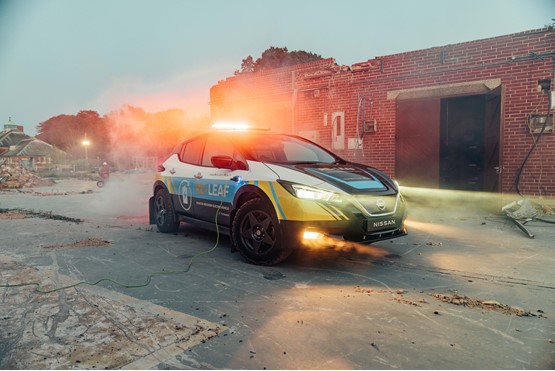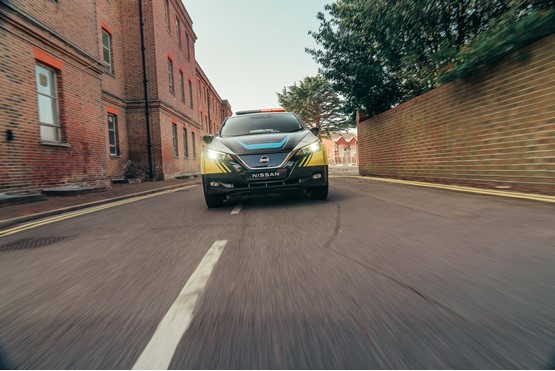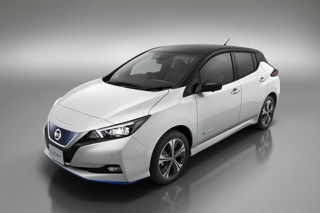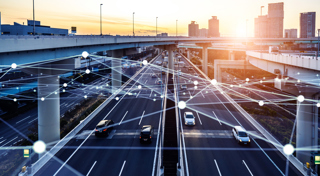
Nissan has created a new Leaf-based concept to showcase the capabilities of an electric vehicle (EV) to provide power in the event of a natural disaster or extreme weather.
The Re-Leaf is equipped with a number of weatherproof sockets mounted on its body, allowing medical, communications, lighting or other life-supporting equipment to be powered from the car’s battery.
In order to enable the Re-Leaf to access damage-stricken areas, it has been kitted out with raised suspension, and unbody guard, custom wheel arches and 17-inch wheels with all terrain tyres.

Nissan says natural disasters are the biggest cause of power outages and quotes a 2019 World Bank report that found natural shocks and climate change caused 37% of outages in Europe between 2000 and 2017, and 44% of outages in the US over the same period.
When a disaster hits, the time for electricity supply to be restored is typically 24-48 hours, depending on the severity of the damage. During that period, Nissan believes electric vehicles can be used to provide zero-emission, mobile emergency power.
In Japan, Nissan has used the Leaf to provide emergency power and transportation following natural disasters since 2011, and the company has formed partnerships with more than 60 local governments to support disaster relief efforts.
Helen Perry, head of Electric Passenger Cars & Infrastructure for Nissan in Europe, said: “Through Nissan Intelligent Mobility, we’re constantly exploring ways that electric vehicles can enrich our lives, beyond just zero-emission transportation. Concepts like the Re-Leaf show the possible application of EVs in disaster management and demonstrate that smarter, cleaner technology can help save lives and provide greater resilience for the future.
“Electric vehicles are emerging as one of the technologies that can improve resilience in the power sector. By having thousands of EVs available on standby, either as disaster-support vehicles or plugged into the network through Vehicle-to-Grid (V2G), they’re uniquely capable of creating a virtual power plant to maintain a supply of energy during a major outage.”
Once power is restored, the Re-Leaf can be recharged using three charging profiles, even using domestic sockets if no EV infrastructure is available in the immediate vicinity.






















Login to comment
Comments
No comments have been made yet.